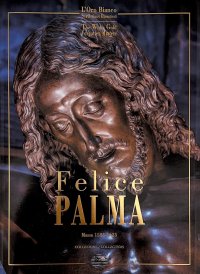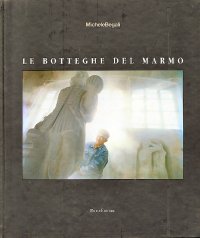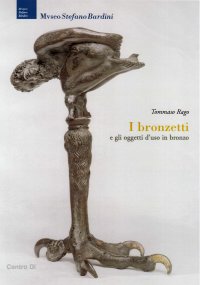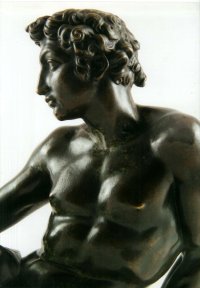Felice Palma. Massa 1583-1625. Collezione / Collection.
Texts by Andrei Cristina, Ciarlo Nicola, Federici Fabrizio, Claudio Casini and Sara Ragni.
Italian and English Text.
Pontedera, 2024; bound in a case, pp. 289, b/w and col. ill., b/w and col. plates, cm 24,5x34.
(L'Oro Bianco. Straordinari Dimenticati. The White Gold Forgotten Masters).
cover price: € 160.00
|
Books included in the offer:
Felice Palma. Massa 1583-1625. Collezione / Collection.
Texts by Andrei Cristina, Ciarlo Nicola, Federici Fabrizio, Claudio Casini and Sara Ragni.
Italian and English Text.
Pontedera, 2024; bound in a case, pp. 289, b/w and col. ill., b/w and col. plates, cm 24,5x34.
(L'Oro Bianco. Straordinari Dimenticati. The White Gold Forgotten Masters).
FREE (cover price: € 160.00)
Le botteghe del marmo
Italian and English Text.
Ospedaletto, 1992; bound, pp. 153, 10 b/w ill., 60 col. ill., cm 24x29.
(Immagine).
FREE (cover price: € 34.49)
Museo Stefano Bardini. I Bronzetti e gli Oggetti d'Uso in Bronzo
Edited by Nesi A.
Firenze, 2009; paperback, pp. 191, 102 b/w ill., 7 col. ill., cm 17x24,5.
(Museo Stefano Bardini).
FREE (cover price: € 30.00)
Bronzetti e Rilievi dal XV al XVIII Secolo
Bologna, 2015; 2 vols., bound in a case, pp. 729, ill., col. plates, cm 21,5x30,5.
FREE (cover price: € 90.00)
AR Magazine 123-124. Abitare Roma. Capitale. Storia e Visioni dal 1871 Aò Prossimo Futuro. Inhabiting Rome. Capital of Italy. History and Visions From 1871 Into the Near Future.
AA.VV.
ARE - Architetti Roma Edizioni
Italian and English Text.
Roma, 2021; paperback, pp. 448, b/w and col. ill., b/w and col. plates, cm 24x30.
ISBN: 88-99836-43-4 - EAN13: 9788899836436
Subject: Essays (Art or Architecture),Magazines
Languages: 

Weight: 1 kg
The story begins in February 1871 - when the city was proclaimed capital -moving on to the utopias of the 1900s, traveling from the Roman Palazzina to the 1960 Olympics, from the city's "borgate romane" to the current housing emergency; the analysis ranges from the indissoluble relationship with the sacred and the Catholic Church - which laid an aesthetic foundation for Rome - to the city of the ephemeral, from the Estate Romana to our contemporary era; an itinerary that describes a city both magnificent and rife with contradictions. By delving into the past, this story intends to push ahead toward possible prefigurations of tomorrow that represent indispensable visions for the programmes and projects of the near future. Everything is linked by a fil rouge: dwelling, the fulcrum of any consideration of Rome's history and future.












